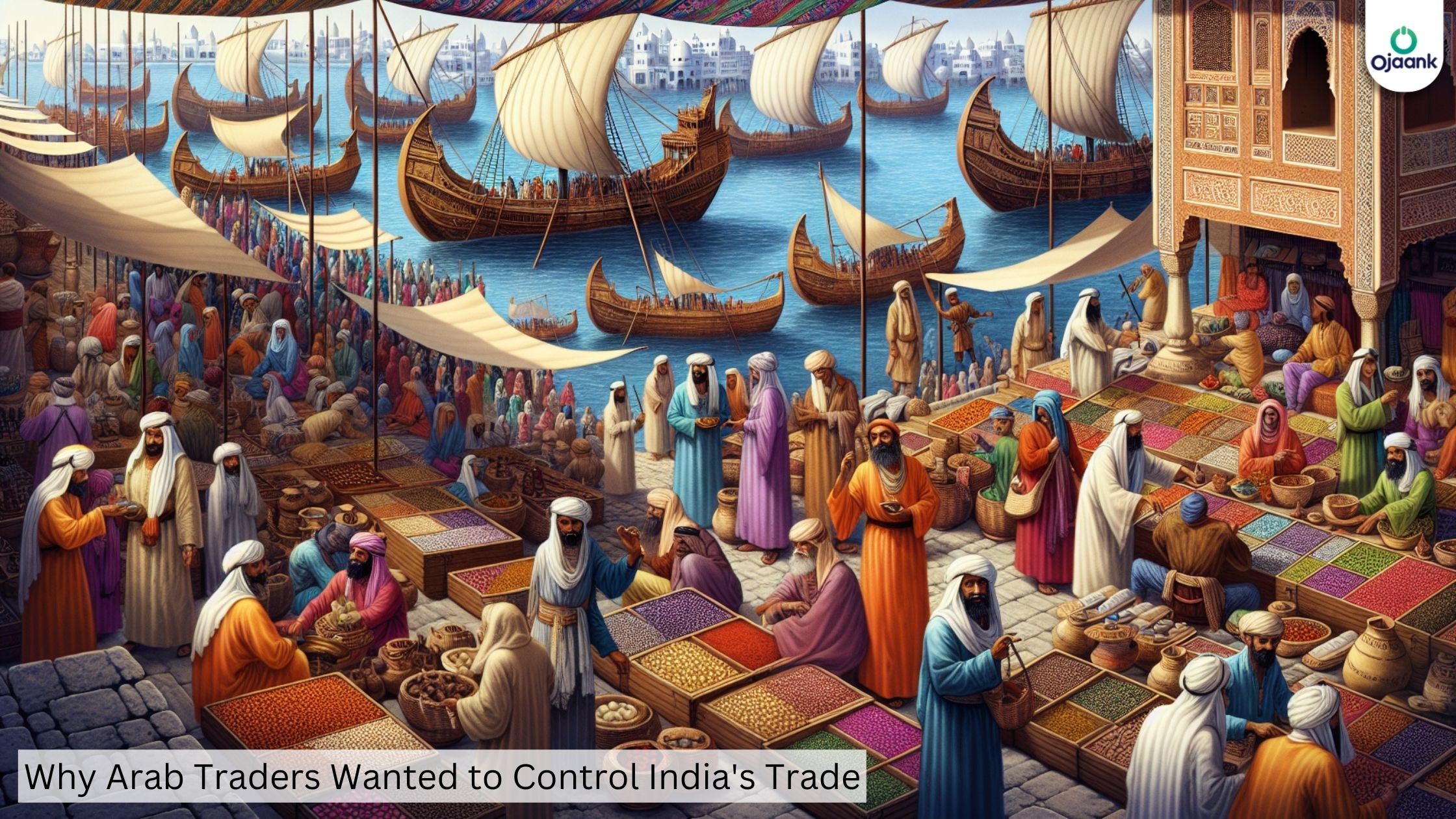Why Arab Traders Wanted to Control India's Trade ?

Why Arab Traders Wanted to Control India's Trade
Throughout history, the Indian subcontinent has been a focal point of global trade, attracting merchants and explorers from distant lands. Among these were the Arab traders, who played a significant role in shaping the commercial landscape of medieval India. The desire of Arab traders to control India's trade was driven by a combination of economic, strategic, and cultural factors. This blog delves into the reasons behind their ambition to dominate this lucrative trade network.
Economic Wealth and Resources
India was renowned for its abundant natural resources and high-quality goods, which were in great demand across the Middle East, Europe, and beyond. The subcontinent produced a wide variety of commodities that were highly sought after, including:
- Spices: India was the primary source of exotic spices such as black pepper, cardamom, cloves, and cinnamon. These spices were not only used for culinary purposes but also for medicinal and preservative purposes, making them extremely valuable.
- Textiles: Indian textiles, particularly cotton and silk, were prized for their quality and craftsmanship. Indian fabrics were considered luxurious and were highly desired by the elite classes in Arab regions and Europe.
- Precious Stones and Metals: India was rich in gemstones like diamonds, rubies, and emeralds, as well as valuable metals such as gold and silver. These items were symbols of wealth and status.
By controlling trade with India, Arab traders could ensure a steady supply of these high-demand products, leading to immense economic gains.
Strategic Location
India's geographical position made it a crucial hub in the global trade network. It served as a vital link between the East and the West, connecting the vast markets of Asia with those of the Middle East, Africa, and Europe. The key trade routes that passed through India included:
- The Maritime Silk Road: This route connected China and Southeast Asia with the Middle East and Europe via the Indian Ocean. Arab traders utilized the ports along India's coastline to facilitate the exchange of goods.
- Overland Routes: The ancient land routes, such as the Silk Road, also passed through India, making it a critical transit point for trade caravans.
By dominating India's trade routes, Arab traders could control the flow of goods and influence global trade dynamics, enhancing their strategic and economic power.
Economic Prosperity
The lucrative nature of trade with India promised substantial profits, which was a significant incentive for Arab traders. The profit margins on Indian goods were high due to their rarity and desirability in foreign markets. By establishing a stronghold over Indian trade, Arab merchants could capitalize on these profitable opportunities, leading to increased wealth and economic prosperity for their home regions.
The influx of wealth from trade also had a multiplier effect, stimulating other sectors of the economy, such as shipbuilding, banking, and craftsmanship. The economic prosperity derived from trade with India helped Arab regions to flourish and develop, contributing to their overall growth and stability.
Cultural and Technological Exchange
Trade with India was not just about the exchange of goods; it also facilitated the transfer of ideas, culture, and technology. The interactions between Indian and Arab traders led to a rich cultural exchange that benefited both sides. Some notable impacts included:
- Scientific and Technological Knowledge: Arab traders were instrumental in transmitting Indian scientific and mathematical knowledge to the Middle East and Europe. The numeral system, including the concept of zero, and advancements in astronomy and medicine were some of the significant contributions.
- Cultural Influence: The exchange of literature, art, and religious ideas enriched the cultural landscapes of both regions. This interaction helped in fostering mutual understanding and appreciation between different cultures.
- Innovations in Trade and Navigation: The collaboration between Indian and Arab traders led to improvements in maritime technology and navigation techniques, enhancing the efficiency and safety of sea voyages.
Conclusion
The Arab traders' ambition to control India's trade was driven by a combination of economic, strategic, and cultural motivations. The wealth of resources, strategic location, and the promise of economic prosperity made India an attractive target for Arab merchants. Additionally, the cultural and technological exchanges that accompanied trade interactions further enriched both civilizations. By understanding these historical dynamics, we can appreciate the profound impact that trade and commerce have had in shaping the course of human history.